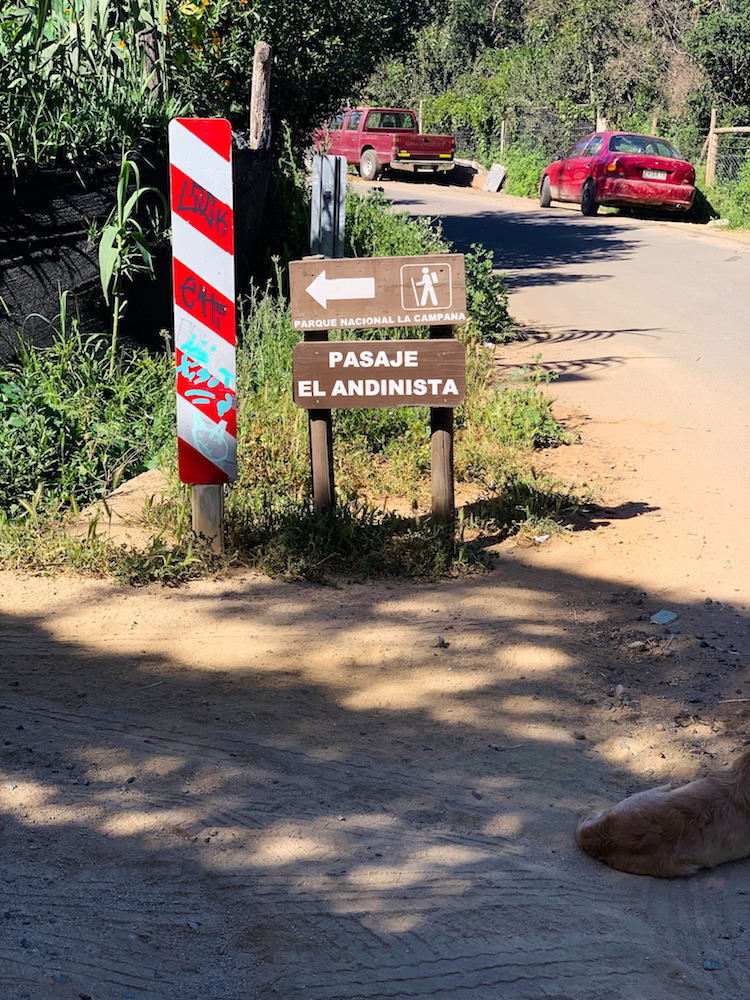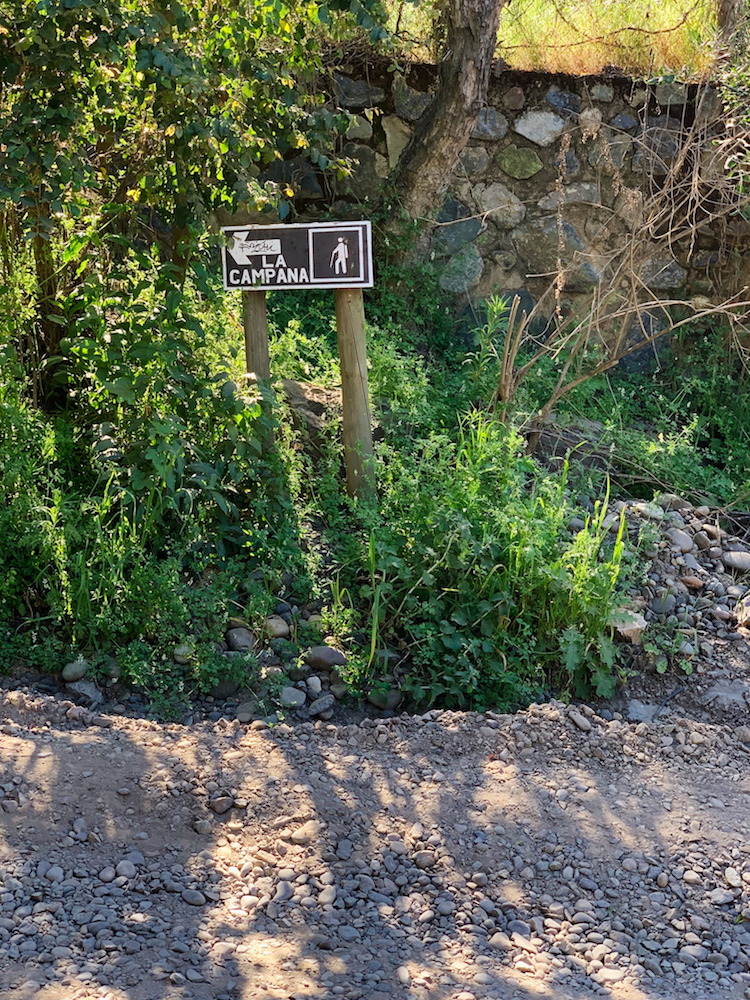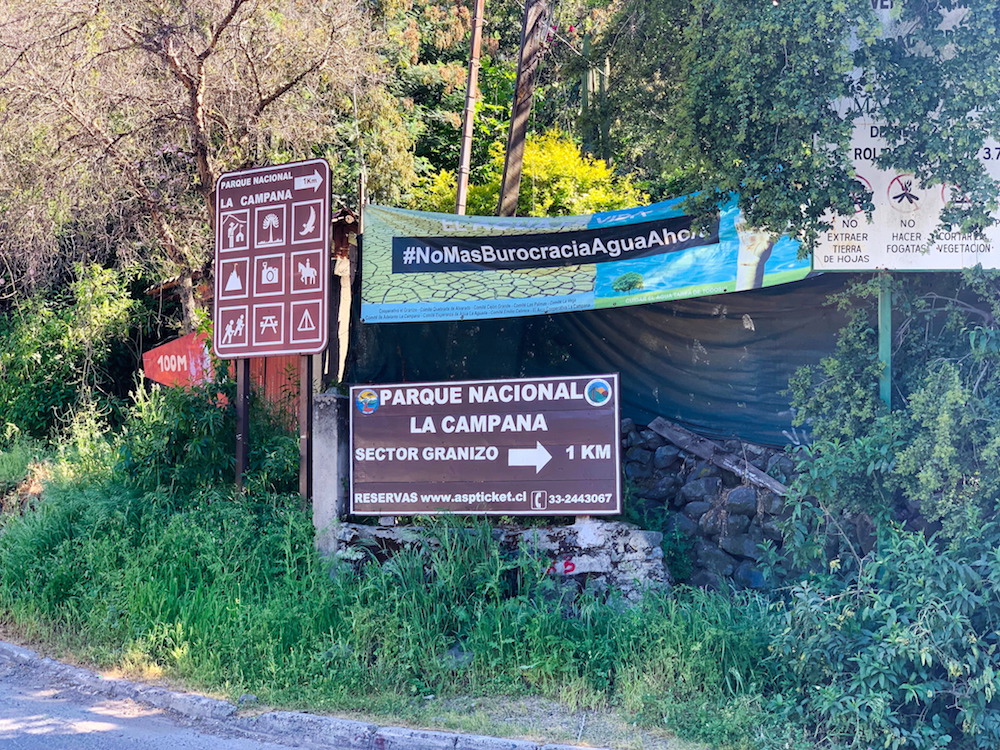Chile’s La Campana National Park sits just 30 miles from the popular vacation town of Viña del Mar. Still, when researching for things to do near Viña del Mar, I found this national park rarely makes lists of things to do. Even in popular guidebooks, this park will sometimes just one sentence.
Still, the idea of La Campana National Park intrigued me. I’d read about an epic hike in La Campana National Park that people have raved about. These people have listed the hike to the top of La Campana as one of the best experiences you can have in Chile. Supposedly, on a clear day, you can get a panoramic view of the width of the country. There’s the Andes Mountains in the east and the Pacific Ocean in the west. And if the view wasn’t enough, you’ll literally be following in Charles Darwin’s footsteps.
While I knew that hiking to the top of La Campana was out of the question (due to time constraints), I saw there were still plenty of view points and other shorter hikes. So, I gave it one day on my Chile itinerary and started planning my visit. But the problem came because there was so little information. While I wasn’t as concerned about hiking once I was there, I was more concerned about how to get to La Campana National Park.
So, this post will fill that gap, in the hope that it makes it easier for other travelers to plan their visit to La Campana National Park.

Three Sections of La Campana National Park
La Campana National Park is divided into three sections. There’s the El Granizo sector, which is the sector I’ll be focusing on in this post. It’s home to Cerro La Campana, which is the only path that leads you to the top of La Campana.
Beyond the El Granizo sector, you also have the Cajon Grande sector, located east of El Granizo, and the Palmas de Ococa sector, which encompasses the northern section of the park.
Getting to La Campana National Park
There’s two options to get to La Campana National Park. One is definitely easier than the other.
By Car
If you have a car, you can skip most of this section because you can follow your GPS right to the park. From there, get out on the trails and start hiking.
By Public Transport
If you’re visiting La Campana National Park via public transport, you’ll want to visit the El Granizo sector as it’s the most accessible. Despite some vague instructions online, it’s actually not super difficult to get to from both Valparaiso and Viña del Mar.
From Valparaiso or Viña del Mar, hop on the train toward Limache. Trains depart frequently and the journey will cost 1250 CLP (plus 2500 CLP for the initial cost of the BIP card). Limache is the last stop on the train, so just stick around until the last stop.
As a note, my journey to Limache was a bit weird. With three stops to go, we were all instructed to get off the train. Then our train left and we had to stand and wait for another train. Soon enough, the next train was there, we boarded, and this next train went all the way to Limache. I don’t know what happened, since when I boarded the train, it said it was going all the way to Limache. But I got there in the end (even if I was slightly delayed) and that’s what counts.
Once in Limache, transfer to a local bus. This is a bit confusing because there’s two different places for busses to pick up. As you exit the train, do NOT go to the right and onto those busses. Instead, walk through the station and wait out front. There is a U shaped road where all vehicles turn around as they loop passed the station. Your bus will pick up here.

You will be looking for a bus to Olmué, but specifically you want one that goes all the way to La Campana National Park. I had read that you want bus #45, but that wasn’t the most helpful information because my bus ended up being bus #01 (for Olmué Plaza). You will see a fixed sign in the lower left corner of the bus windshield that lists all of the destinations. You want to make sure that it says “La Campana”. Then on the electronic screen above the windshield, make sure it displays “La Campana P45”.
Pay the driver directly. At the time of writing, it costs 350 CLP for the journey.
The bus journey will take 30 to 40 minutes, depending on how many stops the bus makes. The bus makes some weird turns that make you feel like you definitely aren’t on the right bus (especially if you’re tracking the bus on your phone’s map), but you will get there in the end.
When the bus stops and starts reversing to turn around, you’ve hit the last stop. Get off here. From this bus stop, you have a one kilometer, uphill hike to the entrance of La Campana National Park.

What to Do at the El Grazino Sector
This plan for this section was to fill it with personal anecdotes. I would hike at La Campana National Park and would give advice for the best viewpoints (known as miradors in Spanish). Things didn’t go according to plan and this section of the post is not what I imagined.
I took the metro to Limache and caught a bus to the park entrance. So far, so good. But in all of my research, I neglected to note that La Campana National Park closes on Mondays. I visited on a Monday. No big deal. I’d just come back the next day and hike. That didn’t work out well either.
At my hotel that night, I scoured the internet to make sure the park would be open the next day. I really didn’t want to go through this whole metro-bus-walk combo just for it to be closed again. But the park was closed again. In fact, the park remained closed during the entirety of my nine day trip to Chile.
Three days before my visit, a hiker went missing (after ignoring ranger advice). The El Granizo and Cajon Grande sectors closed as they searched for the hiker. Over the next week, I kept an eye on this story, just to see if the park would reopen. It never did and the park remained closed even after I returned home (although it has reopened since). So, I never got those views and the personal experience of visiting La Campana National Park.
However, I did do some research and there are a handful of shorter trails to viewpoints in the El Granizo sector. This was my plan and based on some other blog posts I’ve read, seems to be a good plan for those not hiking Cerro La Campana.
Cerro La Campana
This hike is one of the most popular reasons for tourists to visit La Campana National Park, so many blog posts focus specifically on this hike. If you plan to do this hike, there’s a few things you need to be aware of.
First, this is not an easy hike. The hike itself is over seven miles and climbs a mountain. From what I read, the first section of trail is not too bad, but as you near the top, the trail gets more difficult. Make sure you are prepared.
Second, you must register with the park rangers before you do this hike. Not only that, but you must register by 9:30 am (although I’ve read conflicting reports about the actual cutoff). If you arrive too late, you will not be allowed to hike Cerro La Campana.

Entrance Fees
It is not free to enter La Campana National Park, but I’ve read so many conflicting reports about how much it actually costs. However, at the time of writing, it is 8,000 CLP.
You can find more information at the official website, but note that it is in Spanish.
When to Go
La Campana National Park is closed on Mondays. Learn from my mistakes and do not try to visit on Mondays. Also avoid Christmas Day and New Year’s Day. The park can also close for various emergencies (such as lost hikers).
Apart from that, La Campana National Park can be visited all year round.
Final Thoughts
While getting to La Campana National Park was easier than I thought, I’m still bummed that I never got to truly experience it. One day, I’ll make it back for those awesome views.
Continue Your Adventure
Chile Itinerary: For first time visitors, I recommend my 9 Day Chile Itinerary or my 7 Day Itinerary. Visit the capital city of Santiago, the beaches in Viña del Mar, and head south to Puerto Varas.
Santiago: So many trips to Chile start or end in Santiago, so it’s a shame not to visit. Plus, if you have extra time in Santiago, visit El Cajon del Maipo.
Valparaíso and Viña del Mar: Visit Valaparaíso for its colorful street art and relax by the beach in Viña del Mar. Visit the towns separately or combine them into one awesome day. Plus don’t miss some amazing day trips from Viña del Mar.
Chile Travel Guide: Check out my Chile Travel Guide for everything you need to start planning your trip, including itineraries, city guides, travel tips, and a detailed budget.
